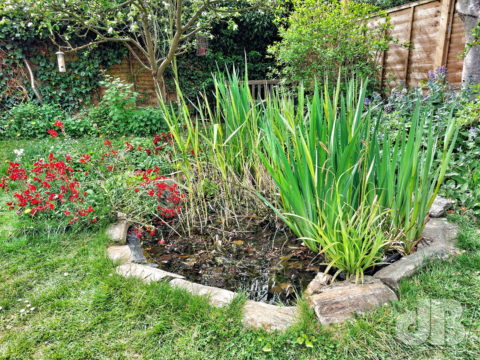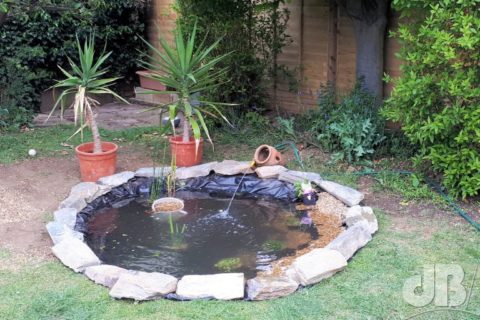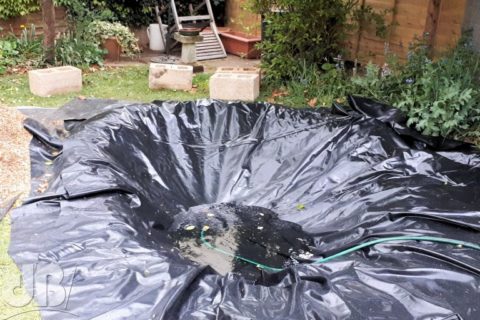This is a bit of an update on a series of #PondLife articles I ran when I first resurrected our garden wildlife pond. Here’s how it looks right now. Very different from the nitryl-lined hole in the lawn back in April 2019. The original pond was twice the surface area, but I filled it in not long after we moved here, as we had very small children and it seemed too much of a risk.

Back in the day, we had a relatively large garden wildlife pond, lots of frogs lots of aquatic plants. But, we also had small children, back in the day, and with health and safety rather than nature conservation in mind, I filled in the pond, turfed over the patch and we had some good kickabouts for many a year with the children. The children are grown. It was time to resurrect the pond.

I dug out the old patch to about half the size of the original, created some terraced edges and the like, sharp side for the base, nitryl liner cut to size, filled it with water. I then chatted to village friends who had well-established ponds and acquired some plants – water soldier, flag irises, sedge, barred horsetail, reeds and the like. I even acquired some aquatic snails – the helical type and the spiral (ram’s horn) type. Three summer’s later and it’s well established.

I can usually count at least half a dozen, sometimes more, frogs on the edges of the pond after dark (Son has counted 9 one evening). We’ve had spawn two years running so far and seen tadpoles and then froglets. No newts yet, which is perhaps a saving grace for the frogs. Lots of dragonfly and damselfly larvae last season. Moreover, the garden birds use the pond for bathing and drinking. We even had a chiffchaff (the first in the garden) bathing several evenings on the trot during the warm spell back in April.
There is also an occasional heron that swoops in to take a frog. It’s a wildlife pond. It’s all part of nature’s way. Watching from a garden chair, tipple in hand on the annual balmy summer evening, it’s almost like being in a David Attenborough TV programme. And, speaking of which during the first lockdown, I occasionally did a live broadcast on social media from the pond.
There are plenty of online resources on “how to create a garden pond” with tips on how to make it work for local wildlife, including hedgehogs. A pond can be a simple affair, sunken watertight vessel, such as a Belfast sink or old metal bathtub, a lined dug-out patch like ours, or a bigger watering hole. Small scale it is relatively easy to do and will boost your eco-credentials in the eyes of the local wildlife. Well worth the effort. I’m keeping my eyes peeled for the arrival of the first wildebeest any day now…